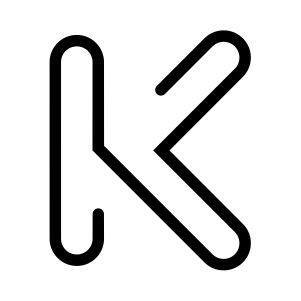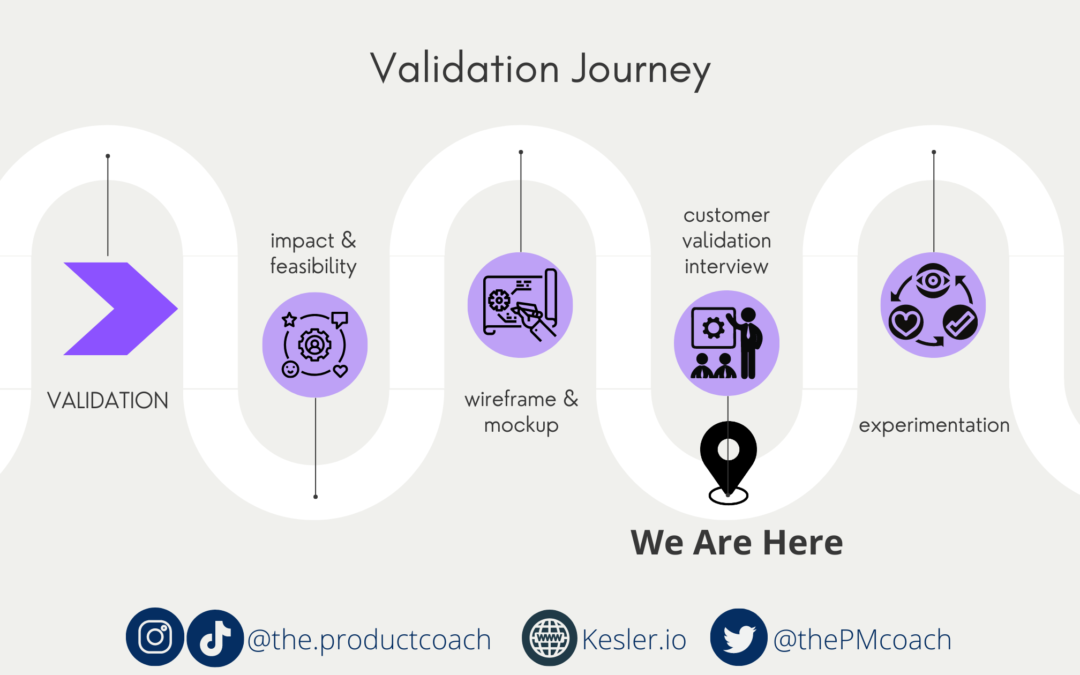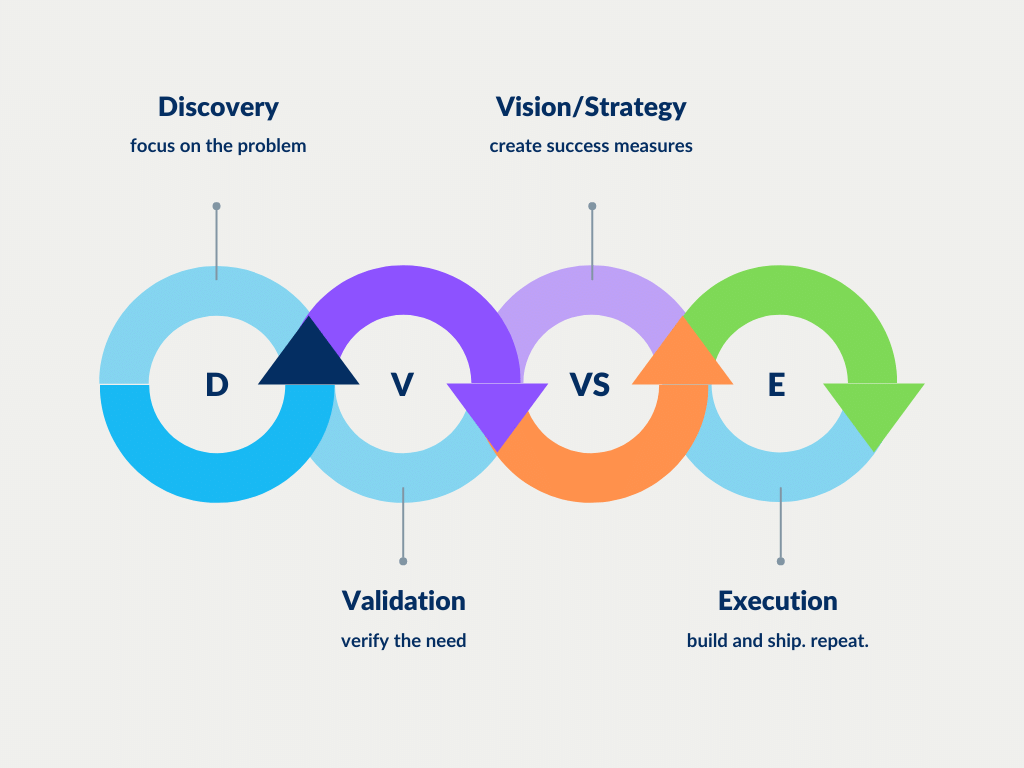Customer validation interviews are an essential step in the product development process. They help you gather feedback from potential customers to ensure that your proposed solution will solve their problems and meet their needs before you even touch a line of code. In this article, we’ll explore how to conduct customer validation interviews using both the scripted and semi-scripted approaches.
Now if you’ve been reading through up until now, you’ve probably already defined your target market and created prototypes. Still, if not, I’ll briefly outline that below and reference my other articles.
Step 1: Define Your Target Persona
Before conducting customer validation interviews, it is essential to define your target persona. It would be best if you had a clear understanding of who your potential customers are and what problems they are facing. This information will help you create relevant questions to ask during the interviews.
A persona is a semi-fictional representation of your ideal customer. It includes information about the customer’s demographics, interests, challenges, and goals. You can use this information to profile your target market and tailor your questions to their needs and interests.
To create personas, conduct market research and analyze your existing customer data. You can also use online tools and surveys to gather information about your target market.
I discuss much of this in more detail in my article Discovery 5: Capture these 5 traits to create the most useful and simplest user persona.
Step 2: Create Prototypes
Once you clearly understand your target persona and their needs, it’s time to create product prototypes. The prototypes should be functional enough to demonstrate the core features of your product, but not necessarily the final version.
To create prototypes, use design tools like Sketch or Figma to create wireframes and mockups of your product. You can also use prototyping tools like InVision or Marvel to create interactive prototypes that simulate the user experience.
When creating prototypes, make sure to focus on the core features of your product. Avoid adding unnecessary features or details that may distract from the primary goal of the product.
I share more detail in The Power of Prototyping: Why Wireframing, Customer Testing, and Mockups are Critical to Product Development.

Step 3: Choose Your Interview Approach
You can use two approaches to conduct customer validation interviews: scripted and semi-scripted.
Scripted Interviews:
Scripted interviews involve using a pre-defined set of questions in a fixed order. They are helpful when you want to ensure that all participants are asked the same questions and can help you compare and contrast their responses.
To conduct scripted interviews, start by creating a list of questions that will help you decide whether what you have proposed will meet the needs of your customer or not. Next, test the questions with a small group of people. To test the questions, as I usually do within our company, I’ll reach out to my marketing or sales engineering buddies to see if the questions are effective at eliciting the desired responses. Adjust your questions based on the feedback you receive. When conducting the interviews, ask the questions in the order they are laid out. Listen carefully to the responses and ask follow-up questions to clarify any unclear points. Analyze the results to identify common themes and insights. Look for patterns in the answers and use them to inform your product development process.
When creating your list of questions, focus on open-ended questions encouraging participants to share their thoughts and opinions. Avoid leading questions that may bias the participant’s responses.
When conducting scripted interviews, I make it as straightforward as possible to the interviewee that I have a list of questions I need to get through, this is not supposed to sound robotic, but I have to get through the questions. I also clarify that I’m looking for honest and open feedback. Nothing they say will hurt my feelings!
Semi-scripted Interviews:
Semi-scripted interviews involve using a set of pre-defined questions but allow for flexibility in the order they are asked and the follow-up questions used. They are helpful when you want to ensure that all participants are asked the same questions but also want to allow for individual differences and variations in responses.
To conduct semi-scripted interviews:
- Create a list of questions relevant to your product and target market.
- Test the questions with a small group of people to see if they effectively elicit the desired responses.
- Adjust your questions based on the feedback you receive.
- When conducting the interviews, use the pre-defined set of questions as a guide but allow for flexibility in the order and follow-up questions.
- Listen carefully to the responses and ask follow-up questions to clarify any unclear points. This approach will enable you to explore areas that may have yet to be anticipated in the initial list of questions and can provide valuable insights into the customer’s experience and needs.
Step 4: Recruit Participants
To conduct customer validation interviews, you must recruit participants who fit your target persona. There are several ways to find potential participants, including:
- Using social media to reach out to people who fit your target market
- Asking for referrals from your existing network
- Offering incentives to participants who refer others
- Using online marketplaces like UserTesting or Amazon Mechanical Turk
When recruiting participants, provide clear instructions on what is expected of them and what they will receive in return for their time. Set up a schedule that works for both parties and be flexible with scheduling if needed.
At some companies I’ve worked at, I’ve had a challenging time recruiting interview candidates. One way that’s made it a lot easier is by meeting regularly with customers to build that relationship, and I also try to meet with new customers within the first month of their signing up. This forges a strong bond because many customers love meeting with a product manager solely focused on improving their experience.
Step 5: Conduct the Interviews
When conducting the interviews, it is essential to create a comfortable and relaxed environment for the participant. Start by introducing yourself and explaining the purpose of the interview. Let the participant know that their feedback is valuable and that you appreciate their time.
Ask open-ended questions that encourage the participant to share their thoughts and opinions. Use follow-up questions to clarify any unclear points and to explore areas that may have yet to be anticipated in the initial list of questions.
Be an active listener, and avoid interrupting the participant or leading them to a particular response. Take detailed notes during the interview and record the session (with transcription) if possible. This will allow you to review the interview later and identify any areas that need further exploration.
Side note on interrupting: I have a hard time with this, but sometimes it is necessary to interrupt a candidate. In interviews, I’ve had candidates sometimes go down what I call a feature request rabbit hole (they start brainstorming cool new features we could add continuously), or they go off on many tangents and almost forget the actual question they’re answering. When this happens, it’s vital to interrupt respectfully and revert their attention to the question you need to be answered.
Step 6: Analyze the Results
After conducting the interviews, it’s time to analyze the results. Look for patterns in the responses and use them to inform your product development process. Identify common themes and insights and use them to refine your product and improve the user experience.
Remember that not all feedback will be relevant or valuable when analyzing the results. Some participants may have opinions that are not representative of your target market, or their needs may not align with your product goals. Use your best judgment when deciding which feedback to incorporate into your product development process.
Conclusion
Customer validation interviews are a crucial step in the product development process. They provide valuable insights into the customer’s experience and needs and can help you refine your product to meet their expectations. By defining your target market, creating prototypes, choosing the right interview approach, recruiting participants, conducting the interviews, and analyzing the results, you can ensure that your product solves the correct problems and meets your customers’ needs. Whether you choose a scripted or semi-scripted approach, the key is to listen carefully to the feedback and use it to inform your product development process.



Recent Comments